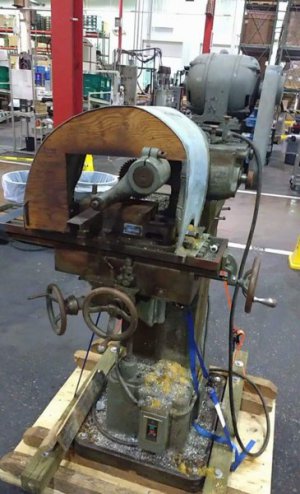- Joined
- Aug 23, 2017
- Messages
- 19
I've been looking at getting a mill for several years now and finally have the space and time to add it to my life. After looking at BPs and some variants, I found this little beauty on eBay for a song. I couldn't pass it up at the asking price, even with freight charges. It included a 6" Kurt vise, so even if it didn't work (and everything turns freely, so I assume it does) it would still be worth the purchase price to me.
I intend to break it down and give it a thorough cleaning so that I can repaint it, then maybe add some goodies to it.

I intend to break it down and give it a thorough cleaning so that I can repaint it, then maybe add some goodies to it.


